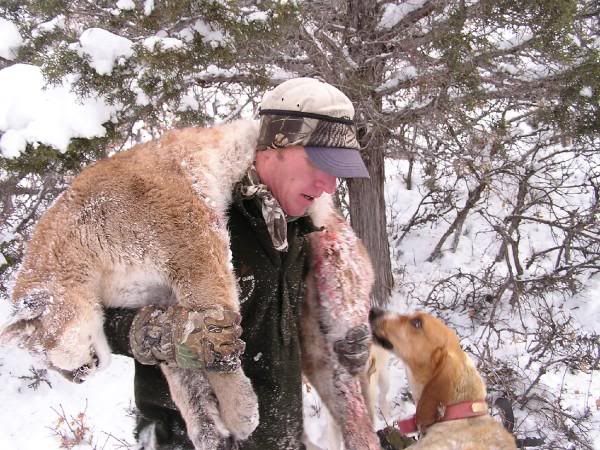Loose Lion
When you see a lion, you know there are too many. This story comes from Washington and is a sample of a situation that is growing more and more common. Why is it so, you ask? Some say we are encroaching on lion territory. We have always done that. I say it is because there are too many lions.

One less lion, many more deer
——————————————
Sightings of a cougar in Beaver Brook and the west side of Barrhead are more a cause for caution than alarm, wildlife officials say.
Derek Brendzan, a Barrhead District Fish and Wildlife officer, said drainages on the west side of town that lead into the Paddle River are used as highways for predators to follow their prey. In recent years, a large number of mule deer have been migrating along a north-south corridor that stretches along the west side of town through Beaver Brook.
A cougar may have moved in to feed on these deer, he said.
To date, Barrhead District Fish and Wildlife has received about four cougar sightings. Some of the descriptions can fit either a cougar or a coyote, Brendzan said. Wildlife officers have not been able to confirm the presence of a cougar or a cougar’s kill, but Brendzan would not be surprised if one of the animals was in the area.
Town staff recently installed signs along the west side of town alerting people to the sightings and providing safety tips.
Brendzan emphasized that people should not be overly concerned but should exercise caution in the area, especially in the early morning and at dusk, as the animals are nocturnal.
Fish and Wildlife will continue to monitor any sightings.
“As long as it’s doing its thing, we leave it alone,” Brendzan said. “If it comes to the point that it starts impacting people or property, then we come along and remove it.”
Beaver Brook resident Theresa Cherwonka was walking to the health club at about 7:00 a.m. two weeks ago. While she was on a path behind the Champion Feed Services building, a truck backfired and a large animal dashed across the path.
“At first I thought it was a coyote, but no – it didn’t have the head of a coyote. It had the head of a cat,” she said.
Cherwonka described the animal as being about “15 inches deep and six to seven feet long (outstretched) as it leaped, with an orangy-brown colour.”
The sighting unnerved her and she took a different route home, where she called Fish and Wildlife to make a report.
Cougar sightings are very rare. They can sometimes cause alarm in a community because they are “large carnivores that we are not used to,” Brendzan said. Brendzan has spotted only two cougars in the wild in his 10 years with Fish and Wildlife.
Attacks on people are far rarer. Citing a 2006 study by the American Academy of Forensic Sciences, Brendzan said North America has seen fewer than 12 human deaths by cougar attacks in the 100 years prior to the study. By comparison, the study said about one death a year occurs in the United States from domestic dog attacks.
If a cougar is in fact in the area, Brendzan said the mule deer will most likely leave once several have been taken. The cougar will then probably follow its prey out of the town as well, he added.
Pamphlets with safety tips and information on cougars are available at the Fish and Wildlife Office, the Town Office and the County Office. Any sightings of cougars or possible cougar kills can be reported to the Barrhead Fish and Wildlife Office at 780-674-8236.
